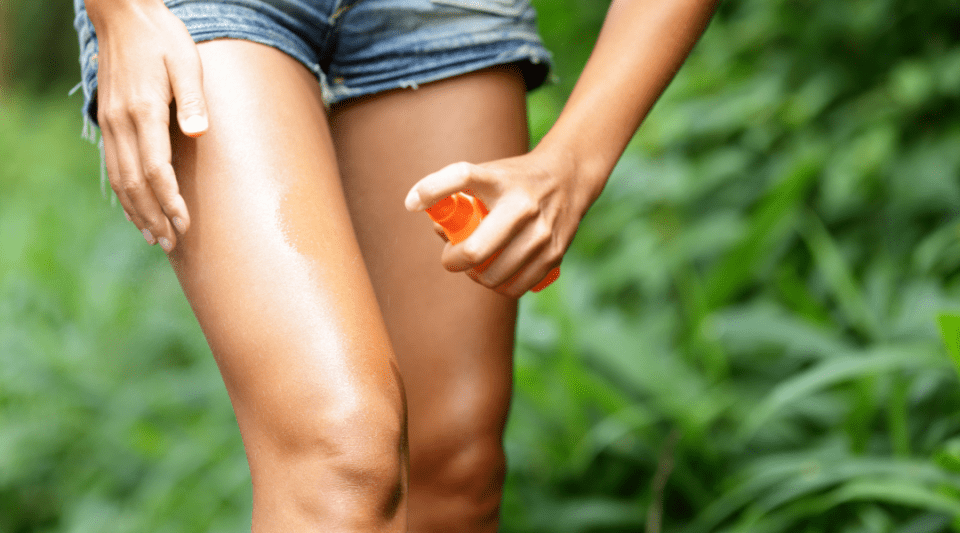Now that summer is here and more time is spent outdoors, it is essential to protect yourself from the sun and insect bites that can transmit serious diseases, such as malaria and dengue, especially in tropical areas. Here are some tips on how to apply insect repellent properly, as well as a description of the main compounds used in them.
Apply sunscreen before repellent
The first step when spending time outdoors is to apply sunscreen. This needs time to be absorbed and to start to act. Manufacturers recommend applying it about 20 minutes before exposure to the sun. This gives sufficient time for the skin to absorb the sunscreen and its active ingredients and provide an effective barrier against UV radiation.
After applying sunscreen, it is crucial to wait the recommended time before applying any other products, such as insect repellent. This interval ensures that the sunscreen has properly settled into the skin, maximising its effectiveness.
Once the sunscreen has been absorbed into the skin, it is time to apply the insect repellent. Repellent must be applied after sunscreen so as not to interfere with its ability to protect against UV radiation. The duration of the repellent's effect varies depending on its composition and the concentration of the active ingredients. Generally, it needs to be applied again after a few hours.
Choose the most suitable repellent
There are four compounds mainly used in insect repellents. Knowing the properties and effectiveness of each of them is crucial to making an informed decision.
In tropical areas, the density and aggressiveness of mosquitoes require repellents with a higher concentration of these compounds. The concentration determines the duration of protection and the frequency of reapplication.
1. DEET (N,N-diethyl-meta-toluamide):
This is the most well-known compound and it is used in most repellents. At a concentration of at least 20%, DEET offers adequate protection in tropical areas. The higher its concentration in the product, the longer the protection it gives.
2. Icaridin:
Its effectiveness is similar to DEET, but is less likely to cause irritation. A 20% concentration can offer several hours of protection, although it may require more frequent reapplication. Suitable for people with sensitive skin.
3. IR3535 (Ethyl butylacetylaminopropionate) and OLE (Oil of Lemon Eucalyptus):
These are equivalent to DEET repellents from a 30% concentration. They may require more frequent reapplication than DEET.
Properly applying sunscreen and choosing the right repellent are essential to protect yourself from the sun and mosquito bites. Knowing the active compounds, their concentrations and understanding their effectiveness is crucial for effective protection, especially if travelling to tropical areas. To ensure maximum protection, you should use products appropriate to your own needs and apply them correctly, by simply following each manufacturer’s instructions.






